Their Samsung Galaxy Z Fold3 and Samsung Galaxy Z Flip3 devices are the ones to beat, even though they offer distinctly different experiences to customers.
Motorola have counted on nostalgia to boost the popularity of their Razr 5G, but it can't beat the foldable handsets on offer from Samsung.
Before we look at the best foldable phones, remember you can compare mobile phone deals at any time using the free Choose comparison tool.
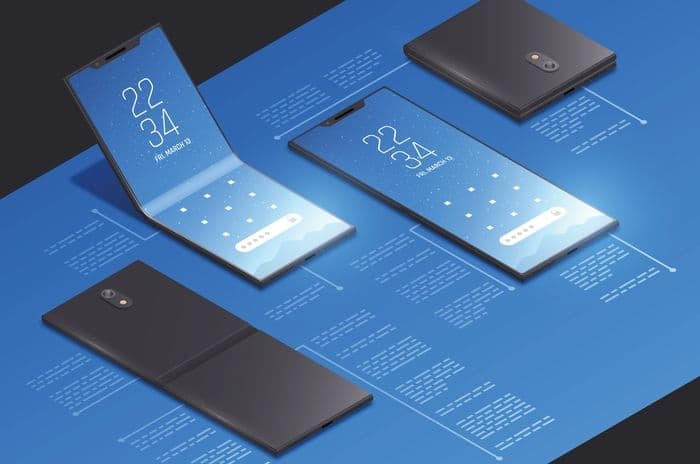
Best foldable phones
So far, the number of foldable mobile phones on the UK market are limited to a handful.
Samsung and Motorola are the big names in foldables so far, with Huawei's efforts overshadowed by their lack of Google apps and most other manufacturers yet to release anything more than prototypes and rumours.
Here's a look at our top foldables for 2021.
1. Samsung Galaxy Z Fold3
Our top pick for a foldable phone in 2021 is the Samsung Galaxy Z Fold3.
Samsung have learned from their previous models and created the first foldable phone with an IPX8 rating for water resistance (although this doesn't include dust resistance so be aware of that). It also has Gorilla Glass Victus on the outside for protection, the strongest option available for smartphones right now.
For the first time in a Samsung foldable, there is support for the S Pen too, allowing customers to use the screen as a drawing tablet or writing pad. Unfortunately, the Pen must be purchased separately.
The Samsung Galaxy Z Fold3 opens out into a 7.6-inch main display while the smaller cover screen is still 6.2-inches. Both screens offer 120Hz refresh rate, meaning the screen will refresh 120 times per second for ultimate brightness (this can be adjusted to improve battery life).
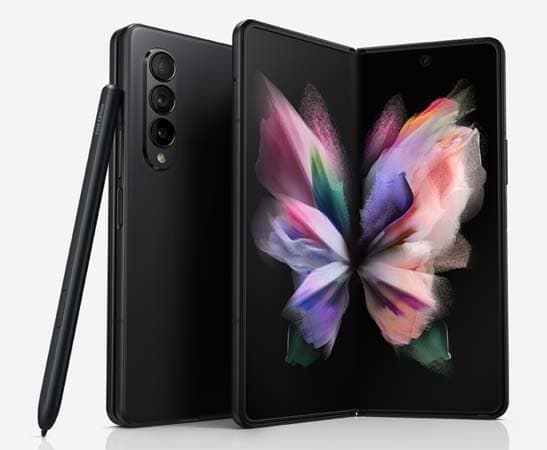
The entry-level storage option for the Fold3 is 256GB, providing enough storage for all the apps customers may want to use. However, it's worth noting there's no external card slot, so the maximum 512GB storage is the best it gets.
Samsung have worked with app developers to help more of them optimise for the unique screen dimensions of the device, an improvement on where we were a few years ago.
Here are some pricing examples on unlimited data with the 256GB option from the major networks:
| Provider | Minutes | Data | Initial price | Monthly price | ||
|---|---|---|---|---|---|---|
| Samsung Galaxy Fold3 5G (256GB) | Vodafone | Unlimited | Unlimited Max | £49 | £68 36 month term |
Get deal |
| Samsung Galaxy Fold3 5G (256GB) | O2 | Unlimited | Unlimited | £50 | £76.99 36 month term |
Get deal |
| Samsung Galaxy Fold3 5G (256GB) | EE | Unlimited | Unlimited | £30 | £98 24 month term |
Get deal |
| Samsung Galaxy Fold3 5G (256GB) | Three | Unlimited | Unlimited | £99 | £105 24 month term |
Get deal |
It's worth pointing out the two cheaper options on Vodafone and O2 are both on 36-month handset plans with their EVO and Refresh plans respectively, so customers are essentially paying the device off over an extra year.
As well as the high prices, there are also a couple of other downsides to the Samsung Galaxy Z Fold3:
- The camera set-up isn't anything special
- No dust resistance rating
- The folding crease is still noticeable at times
Overall, though, the Samsung Galaxy Fold3 has ironed out many literal and metaphorical creases and is the folding smartphone to beat.
2. Samsung Galaxy Z Flip3
Next up is the clamshell foldable or flip phone, the Samsung Galaxy Flip3.
Again, this handset has evolved since the first Samsung Galaxy Z Flip, with the price noticeably dropping below £1,000 for the first time.
This still marks the Flip3 as an expensive smartphone, but it's more than £600 cheaper than the Fold3, so some customers may opt for the Flip3 based on price alone.
Like its bigger sibling, the Flip3 is a 5G-capable device with IPX8 water resistance (again, no dust resistance) and a dynamic display with a 120Hz refresh rate.
The top storage option on the Flip3 is only 256GB, although many customers will be satisfied with the 128GB option.
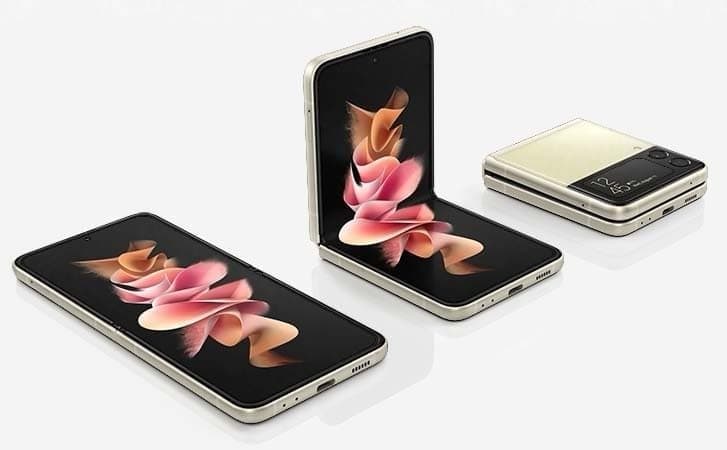
The Flip3 folds out to a main 6.7-inch display. One of the major benefits with the Flip3, however, is how compact it is when folded. It becomes a stylish square piece of technology with a small 1.9-inch Super AMOLED cover display to allow users to undertake basic tasks.
Here are some example tariffs for the Samsung Galaxy Z Flip3:
| Provider | Minutes | Data | Initial price | Monthly price | ||
|---|---|---|---|---|---|---|
| Samsung Galaxy Flip3 5G (128GB) | Vodafone | Unlimited | Unlimited Max | £29 | £50 36 month term |
Get deal |
| Samsung Galaxy Flip3 5G (128GB) | O2 | Unlimited | Unlimited | £50 | £58.99 36 month term |
Get deal |
| Samsung Galaxy Flip3 5G (128GB) | Three | Unlimited | Unlimited | £49 | £64 24 month term |
Get deal |
| Samsung Galaxy Flip3 5G (128GB) | EE | Unlimited | Unlimited | £30 | £72 24 month term |
Get deal |
The prices here are more affordable for many, but still beyond the reach of customers searching for a new smartphone.
It's also worth highlighting the reasons this came second in our list rather than beating the Fold3:
- The main screen is more like a regular phone, so it loses the wow factor and the options for streaming, gaming and working on a larger screen.
- The battery on the Flip3 is only around three quarters of the size of the Fold3. This means users may struggle to get a full day on the battery, although using the cover screen for smaller tasks will reduce the strain on the battery.
- No 512GB storage option on the Flip3 might put some users off.
- No S Pen support
There's a clear difference emerging in the way Samsung market these two devices: the Fold is for productivity and big entertainment while the Flip is a compact, more practical device.
3. Motorola Razr 5G
The Motorola Razr 5G is another clamshell foldable. It isn't a substantially different device to the 4G version released earlier, but it is 5G-ready and that's increasingly important to customers of premium smartphones like this one.
This device is a throwback to when Motorola's clamshell phones were in their heyday, and there's certainly a lot of nostalgia around the Razr. Unfortunately, that means it doesn't have the polish we see with the Samsung devices - but it's similarly expensive as we demonstrate below.
The battery on the Razr is even smaller than the one on Flip3, so users may struggle to get through a full day without charging. Again, though, the external screen helps reduce the need for opening the full phone all the time, and it's slightly bigger than the Flip3's at 2.7-inches.
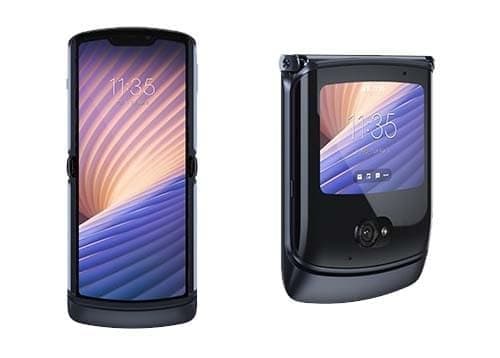
The Motorola Razr 5G also boasts a superior camera set-up to the Samsung devices discussed above with a 48MP rear camera and a front 20MP one.
There are economies elsewhere, however, with a plastic P-OLED screen that doesn't quite compete with the devices above or more traditional smartphones either.
Here are some current deals from Vodafone and O2:
| Provider | Minutes | Data | Initial price | Monthly price | ||
|---|---|---|---|---|---|---|
| Motorola Razr 5G (256GB) | O2 | Unlimited | Unlimited | £30 | £67.28 36 month term |
Get deal |
| Motorola Razr 5G (256GB) | Vodafone | Unlimited | Unlimited Max | £49 | £70 36 month term |
Get deal |
So, the deals on the Razr are more expensive than the Flip3 which is arguably the better device.
If nostalgia is the reason for choosing a Motorola clamshell, customers may be willing to pay the extra for a poorer experience. Many others will go straight to Samsung.
Other foldable mobile phones
So far, Samsung and Motorola are the big names in foldable phones for the UK market, but other manufacturers have made some noises about the technology.
Xiaomi are reportedly working on a clamshell folding phone similar to the Motorola Razr, but they also revealed a prototype of a bifold device in early 2019. Oppo also showcased their own foldable phone prototype around the same time.
Google, Sony and ZTE have all patented designs for foldable phones, although whether these come to fruition and when they might appear on the market is still uncertain.
An interesting hybrid device brought out by ZTE is the Nubia Alpha which is a cross between a smartphone and a smartwatch with a flexible screen that wraps around the wrist. However, it's been reported to be a little glitchy and temperamental, although it's still a good representation of what flexible screens can be.
TCL is possibly a name that isn't too familiar to Choose readers, but the Chinese company unveiled the work they've been doing on smartphones at CES2020 with a focus on the cheaper end of the market - even with 5G capable phones. So, when TLC's foldable phone hits the market, it could be a cheaper option than we've seen from other manufacturers.
One foldable phone already available in China is the Royole FlexPai for around £1,000, but reviews suggest it was built very much as proof that a foldable device was possible rather than with the end user in mind.
One notable absentee from this list is Apple, although there are rumours that they've been working on folding smartphone technology behind the scenes. Apple are generally keen to avoid PR disasters of the type experienced by Samsung in 2019, so any foray into the foldable phone market will be with a device they're completely confident of.
Like several other manufacturers, Apple seem to be waiting to see whether there's a definite demand for foldable phones before they commit to release.
Have foldable phones taken off yet?
Foldable phones burst onto the scene early in 2019 with the announcement of the first Samsung folding phone, the Samsung Galaxy Fold.
Initial enthusiasm was tempered by two things: the price tag of £1,600 and the fact that the handset had to be postponed by several months when early reviewers reported their screens were cracking after just a few days of normal use.
Eager not to fall into the same trap, Huawei also delayed the release of their Mate X folding phone and that model later only released in China.
Given the problems the Mate X had in testing, the first foldable from Huawei the UK saw was the Mate Xs in 2020.
The successor to that device called the Huawei Mate X2 is also likely to be released in China only in 2021, with Huawei struggling to sell their HarmonyOS to customers following their long-running issues with US companies like Google.
Motorola have also got in on the foldable game, releasing their new-style Motorola Razr in February 2020 and, later that year, a 5G-capable version of the device.
Price remains an issue for many customers.
To get the most out of the functionality of a foldable phone (heavy streaming, gaming and productivity) requires high or unlimited levels of data, so the most expensive mobile tariffs usually need to be taken with these devices.
As an example, the Samsung Galaxy Z Fold3 with unlimited data on O2 costs £50 upfront and £76.99 per month at the time of writing - that's not affordable for most mobile customers.
Fold or flip
Foldable phones and flip phones are similar in design, but the execution is different as we saw above with the two Samsung devices.
Whereas a folding phone opens up to a bigger screen that can function as a tablet or used as multiple screens of a decent size, a flip phone is more compact yet has an external screen for basic tasks like changing music or viewing alerts.
These are different experiences and it's clear they'll appeal to different types of customers. Since Samsung has released three of each device now, there's no indication that one is better than the other, and we may see folding and flip phones competing for the foreseeable future.
Why choose a foldable phone?
One of the first questions generally asked when foldable phones are discussed is why a phone that folds is better than one that doesn't.
So, here are some of the reasons foldable phones may add to the user experience:
- Larger screen area - A foldable screen can double the screen size of the smartphone, providing a larger area for watching video, playing games or undertaking everyday tasks.
- Flexible multitasking - The dual screens allow for effective multitasking where a user can watch a video on one half of the screen while working or answering messages on the other half.
- More compact - While foldable phones are necessarily deeper than traditional phones due to two screens being folded together, they're more compact than the equivalent of a tablet or iPad - and they still fit into a pocket.
- Convenience - It's much more convenient to travel with a foldable phone rather than with a phone plus a tablet and other devices.
- Better hardware - Thanks to the increased space behind two screens, there's the potential for extra components to be packed inside to give foldable phones more power than their traditional counterparts.
It's also the case that foldable phones are still considered a novelty and early adopters may enjoy the prestige of being among the first to try such a new (and expensive) piece of kit.
That said, there are drawbacks to foldable phones, and these may put people off:
- Price tags - There's no denying foldable phones come with a hefty price tag, making them unaffordable for many people as things currently stand.
- Heavier and bulkier - While foldable phones are more compact in the sense that they offer more screen for less space, they're also bulkier than the phones we're used to putting in our pockets and heavier too.
- Untested - As the saga of the first Samsung Fold has shown, the road to delivering new technology is never smooth, and early adopters may find they're being used as guinea pigs for technology that isn't quite there yet.
As with all new pieces of technology, it remains to be seen whether foldable phones are going to be the huge success they've been touted as.
It's been suggested that, if they do take off, foldables could be a replacement for tablets as they could provide the same functions in a more compact package. Again, this is all speculation, and the history to date of foldable phones suggest they aren't going to corner the market anytime soon.
Verdict: Samsung in the lead
While 2019 was supposed to be the year of the foldable phone, the concept didn't take off as manufacturers might have hoped and foldable devices are only now finding their audience.
Samsung is leading the charge thanks to their dual-pronged attack on foldable and clamshell flip devices, but there are still downsides to purchasing one.
One major sticking point remains pricing. Few people can afford to spend £1,600 on a smartphone or sign up to a £99 monthly mobile contract, so foldables are still pitching towards tech fans rather than the everyday user.
As we've mentioned, though, manufacturers such as TCL are likely to bring foldables into more competitive territory, whether that's in 2021 or further in the future. When this happens, lower priced devices could bring a fresh buzz to foldables.
If the point of foldable phones is to improve the user experience, they need to move away from the glitches and PR disasters to focus on what their audience needs.
Compare mobile phone deals using the free Choose comparison tool and see the best deals on popular devices across major networks and smaller players too.



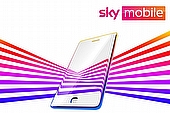

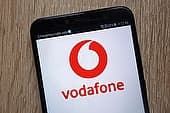

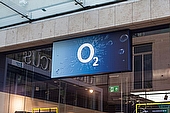

Comments